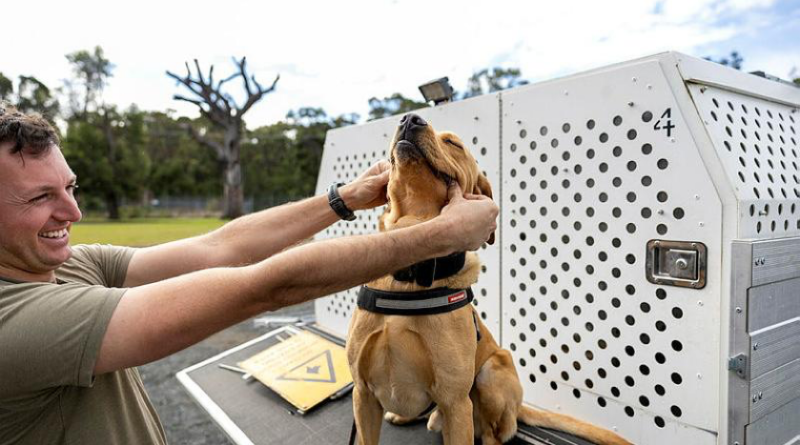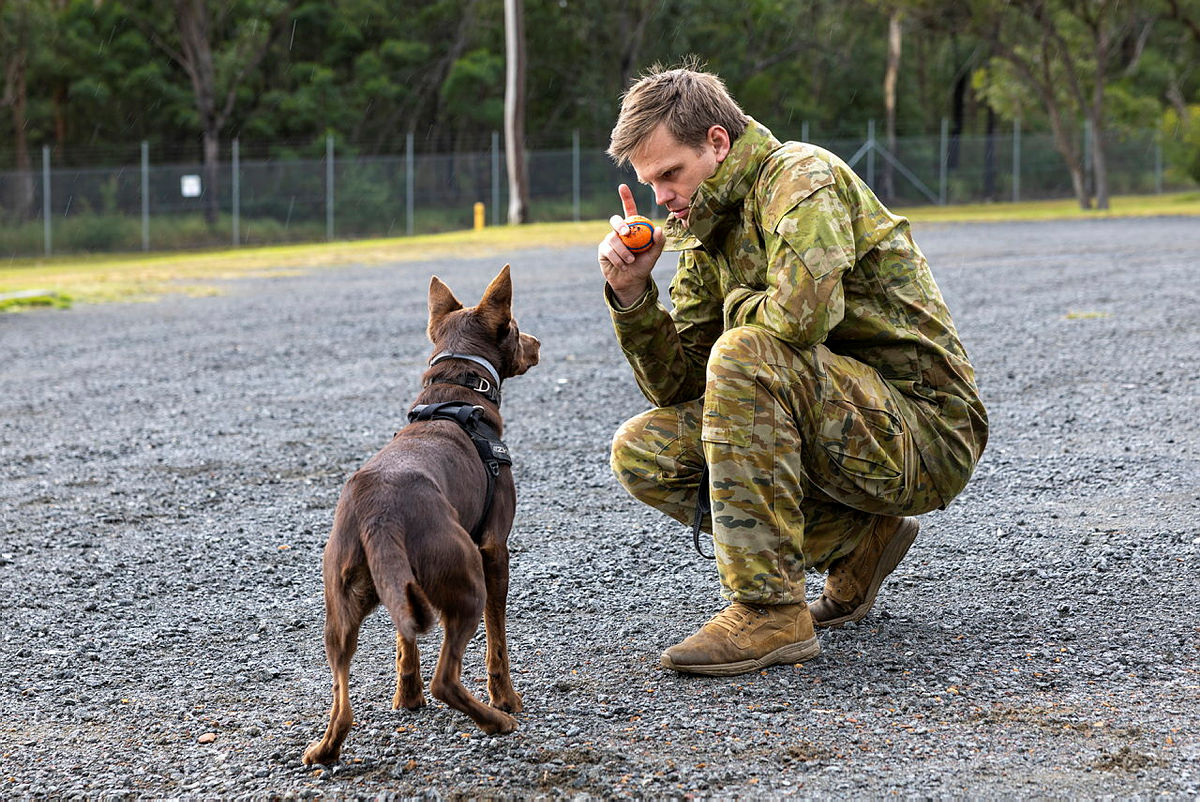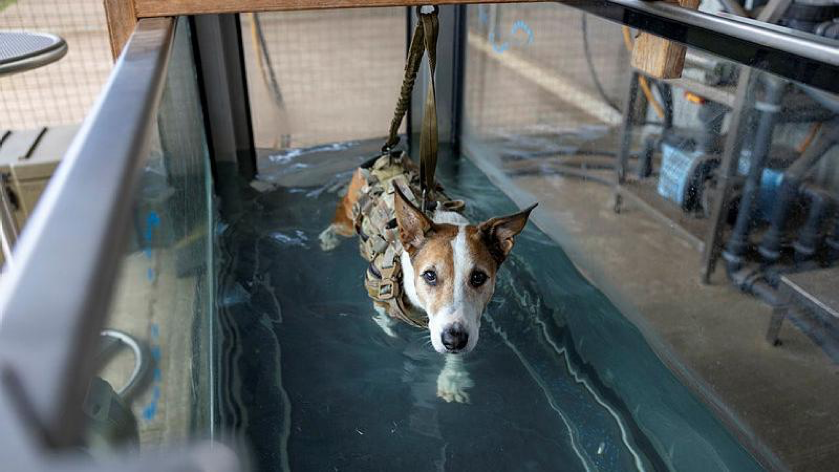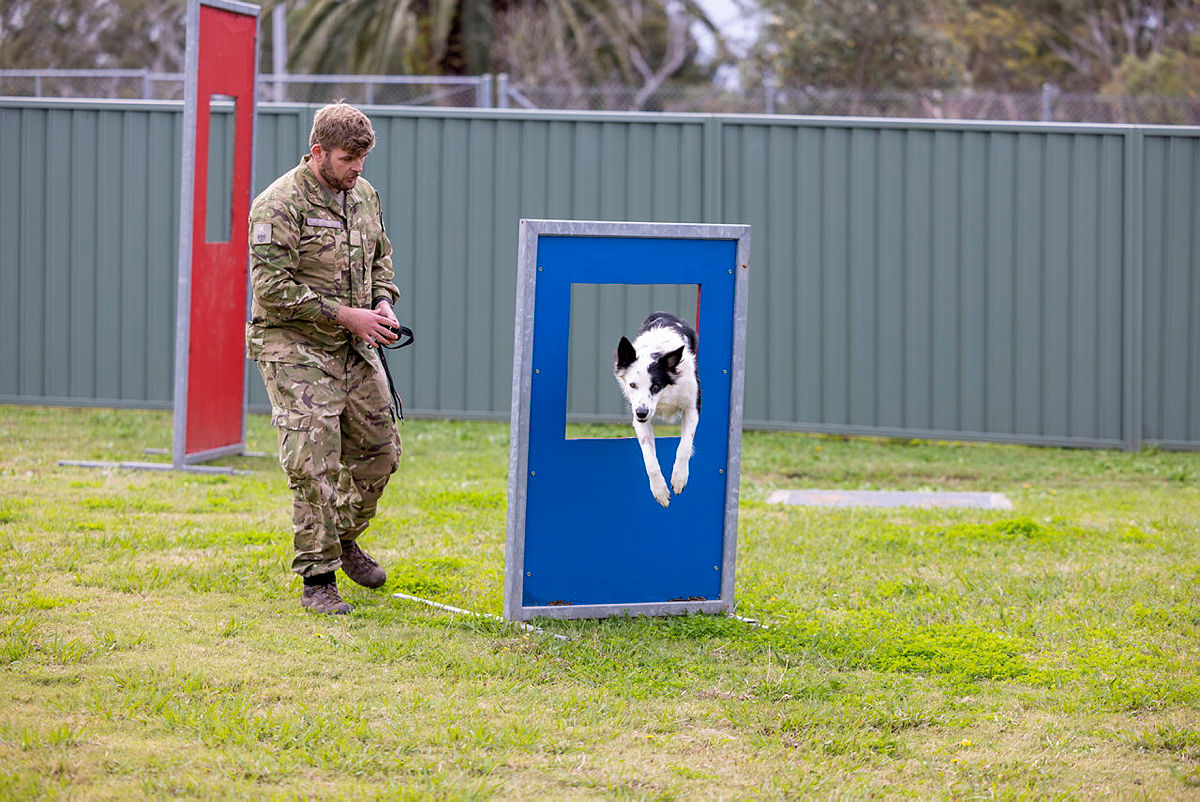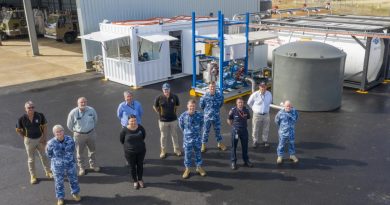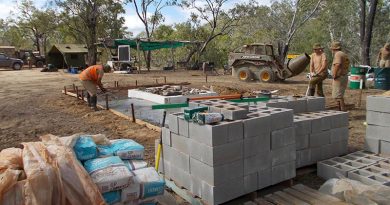Explosive detection dogs have a blast on the job

Sapper Dean Purcell starts the day with a smile.
CAPTION: Sapper Dean Purcell and explosive detection dog Ledge before a morning run at the School of Military Engineering at Holsworthy. Story by Leading Seaman Nadav Harel.
Every morning before sunrise, the 1st Combat Engineer Regiment (CER) handler tidies dog kennels and takes his four explosive detection dogs for a run.
Sapper Purcell is on the explosive detection dog (EDD) supervisor’s course at the School of Military Engineering, Holsworthy, along with students from New Zealand Army and the Malaysian Army.
The combat engineer and four other handlers teach three-to-four untrained dogs to sniff out explosives and weapons.
The EDD supervisor’s course is a requirement for handlers to become CER section commanders, and typically runs for six months, starting in January or February with newly acquired dogs.
Training begins with an assessment to determine a dog’s suitability.
Dogs are tested for drive, obedience, overall health and ability to socialise with humans.
CAPTION: Lance Corporal Michael Sutherland and explosive detection dog Brett at the kennels at the School of Military Engineering at Holsworthy.
Those on the course must train at least one new dog so they are ready to work with future handlers on the next basic handler’s course.
Dogs are taught to accept a specialised working harness, which often serves as a cue, indicating it’s work time.
Handlers reinforce good behaviours by giving their dogs a special treat – a highly-prized ball.
Concurrently, handlers undergo training in canine psychology.
Classical conditioning, or learning through association, is a fundamental training technique.
Conditioning involves creating a strong link between a specific target odour and a high-value reward for the dog.
Ammonium nitrate, a common component in explosives, is the initial odour introduced to dogs.
CAPTION: Explosive detection dog Daisy on the water treadmill during a morning PT session at the kennels at the School of Military Engineering at Holsworthy.
As they go through the course, the dogs must master searching buildings, vehicles, routes and open areas to progress.
The dogs’ critical role in military operations is universally recognised.
“Our dogs in Afghanistan literally saved lives by sniffing out IEDs and all sorts of other dangerous stuff,” Sapper Purcell said.
“They’re incredibly important to our unit. When they’re not on deployment these high-drive dogs are always eager to work.
“Every day, they get to jump in the car, go out, and just have an absolute blast running around.”
CAPTION: Lance Corporal Rigel Blanchet and explosive detection dog Maggie.
.
.

.
.

